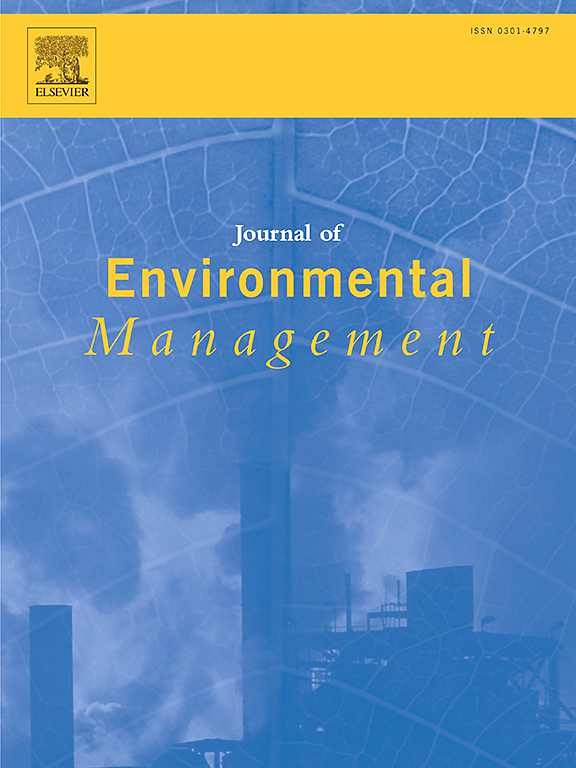环境DNA有效地揭示了濒临灭绝的三叉戟塔西加斯苗圃底栖动物的空间格局
IF 8.4
2区 环境科学与生态学
Q1 ENVIRONMENTAL SCIENCES
引用次数: 0
摘要
泥滩是高度濒危的三叉戟鱼的主要栖息地,因此建立了自然保护区来保护这些栖息地。然而,生境状况监测不足妨碍了对保护成果的评价和促进今后的管理。采用环境DNA (environmental DNA, eDNA)方法,以底栖生物群落为敏感指标,反映受不同程度人为活动干扰的泥滩中三叉齿鼠的生境状况。结果表明,人为干扰可能通过改变资源竞争格局或沉积物性质而改变底栖生物组成。沉积物底栖生物表现出明显的空间异质性。在被红树林覆盖的沉积物中,底栖生物倾向于形成更稳定的网络,这可能是由于红树林提供的高比例负相关和生态服务。相反,在人为干扰区,沉积物底栖生物可能重塑物种相互作用模式,从而降低网络稳定性;它们的扩散能力较弱,这可能与强烈的泥滩耕作造成的生态位宽度狭窄和空间分离有关。底栖生物具有在不同区域间迁移的潜力,人类频繁的活动将增加这种迁移。综上所述,eDNA方法有效地揭示了底泥生物对人为干扰的敏感性,降低了底泥生物网络的稳定性和扩散能力,从而削弱了底泥生物对环境变化的适应能力,增加了底泥生物在小尺度上的空间异质性。未来应注重在管理过程中确保栖息地的连通性。应将高效、无损的eDNA方法纳入三剑齿虎生境监测与保护框架。本文章由计算机程序翻译,如有差异,请以英文原文为准。
Environmental DNA effectively reveals spatial patterns of benthos in a nursery habitat of the highly endangered Tachypleus tridentatus
Mudflat are heavily relied upon by the highly endangered Tachypleus tridentatus, nature reserves have been established to protect such habitats. However, inadequate habitat status monitoring hinders evaluation of conservation achievements and the promotion of future management. We used benthic community as sensitive indicator to reflect the habitat status of T. tridentatus in a mudflat disturbed by different degrees of anthropogenic activity, using the environmental DNA (eDNA) method. Results indicated that anthropogenic disturbances may alter benthic composition via changing resource competition pattern or sediment property. Sediment benthos displayed much obvious spatial heterogeneity than water. In sediment covered with mangroves, benthos tended to form more stable networks, potentially contributed by high proportion of negative correlations and ecological services provided by mangroves. In contrast, sediment benthos in anthropogenically disturbed zones might reshape species-interacting patterns and then decrease network stability; they displayed less dispersal ability, which might be related to their narrow niche width and spatial segregation caused by intense mudflat farming. Benthos have migration potential between different zones, and frequent human’ movements will increase this migration. In conclusion, the eDNA method effectively revealed that sediment benthos are sensitive to anthropogenic disturbance by decreasing their network stability and dispersal capability, which may weaken their resilience to environmental changes and increase their spatial heterogeneity even on a small scale. Future attentions should focus on ensuring habitat connectivity during management. The efficient and non-destructive eDNA method should be included in the habitat monitoring and protection framework for T. tridentatus.
求助全文
通过发布文献求助,成功后即可免费获取论文全文。
去求助
来源期刊

Journal of Environmental Management
环境科学-环境科学
CiteScore
13.70
自引率
5.70%
发文量
2477
审稿时长
84 days
期刊介绍:
The Journal of Environmental Management is a journal for the publication of peer reviewed, original research for all aspects of management and the managed use of the environment, both natural and man-made.Critical review articles are also welcome; submission of these is strongly encouraged.
 求助内容:
求助内容: 应助结果提醒方式:
应助结果提醒方式:


